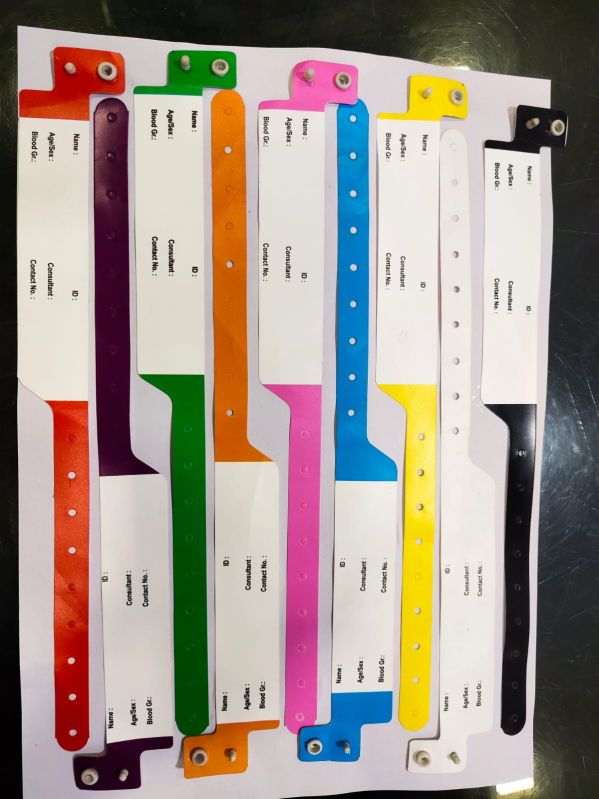Best Practices for Introducing a Patient Identification Band System in Your Clinic
Best Practices for Introducing a Patient Identification Band System in Your Clinic
Blog Article
Discovering the Different Kinds of Patient Identification Band Used in Medical Facilities
In the detailed world of health care, the critical role of Patient Identification bands often goes unnoticed. These bands, differing from simple paper wristbands to advanced RFID bands, develop the foundation of Patient safety and security methods, guaranteeing precision in Patient Identification. The substantial diversity of these bands, each with its special advantages and constraints, is typically ignored. As we browse through this subject, one may get insight right into the refined intricacies and vital significance of such bands in clinical centers.
Understanding the Relevance of Patient Identification Bands
While they may appear like plain accessories, Patient Identification bands play a vital role in medical centers. These bands offer as a critical tool for validating Patient identification, avoiding medical mistakes connected to misidentification. Patient Identification bands additionally help in streamlining management tasks, ensuring exact record-keeping and invoicing.
Traditional Paper Wristbands: Their Use and Limitations
Traditional paper wristbands have actually been a staple in Patient Identification throughout various medical facilities. While their usage is widespread, they nurture specific constraints that may impact their effectiveness in Patient monitoring. This section will concentrate on the scope of their application and the inherent disadvantages linked with their usage.
Paper Wristbands: Use Extent
In the realm of Patient Identification, paper wristbands have long held an important role. These bands are generally used in outpatient setups, where the Patient's stay is temporary. Regardless of advancements in modern technology, the humble paper wristband continues to be a trusted and economical service for Patient Identification in various medical care situations.
Limitations of Paper Wristbands
Despite their widespread use, paper wristbands are not without their disadvantages. Their physical longevity is one of the considerable limitations. Exposure to water, sweat, or misuse can make them unreadable and even trigger them to degenerate. Additionally, paper wristbands often do not have the technological abilities of even more contemporary options, such as barcoding or RFID chips, limiting their capability to merely displaying created details. The inability to upgrade or change the information on the wristband is an additional shortcoming. If the information is handwritten, legibility can be compromised, leading to possible misidentification. Paper wristbands can create pain or skin irritability to some clients, particularly when used for prolonged durations.
Barcoded Wristbands: Developments in Patient Identification
While Patient Identification has long been an essential aspect of health care, the advent of barcoded wristbands symbolizes a significant jump onward. These bands leverage the simpleness of barcoding technology, allowing for Patient info to be quickly checked and accessed. They boost the speed and accuracy of Patient Identification, minimizing the danger of medical errors connected to misidentification.
Superhigh Frequency Identification (RFID) Bands: an Action Towards Futuristic Medical Care
The development of Patient Identification bands has caused the emergence of Superhigh frequency Identification (RFID) Bands (patient identification band). These cutting-edge gadgets present essential advantages for health care centers, offering an extra effective and highly advanced ways of Patient Identification. The application of RFID in health care is a significant action towards a more futuristic method to Patient administration and safety and security
Comprehending RFID Bands

RFID Bands: Key Benefits
Mostly, these bands enhance Patient safety and security by supplying accurate, instant Identification, thereby reducing medical errors. RFID bands can store a vast quantity of Patient data, including clinical history and allergies, allowing personalized treatment. On the whole, RFID bands stand for a significant innovation in Patient Identification modern technology, profiting both clients and health care suppliers.
Implementing RFID in Medical Care
These bands give a smooth means to track and determine patients, ensuring their security and boosting performance in treatment procedures. RFID bands reduce medical errors by offering accurate Patient Identification, which is important in stopping misdiagnosis or incorrect medicine administration. Hence, the application of RFID bands is a significant step in the direction of improving Patient safety and security and healthcare delivery.

Color-Coded Wristbands: Aiding in Quick and Accurate Diagnosis
In the bustling environment of a clinical center, color-coded wristbands have arised as important tools for swift and precise Identification of an individual's clinical condition. These wristbands, put on by individuals, bring particular shades that correspond to different medical conditions or conditions. Red go to website can show allergic reaction dangers, while yellow might represent an autumn danger. This system is made to use immediate visual hints to healthcare service providers, boosting Patient safety and care quality. In emergency circumstances, using these wristbands permits for fast decision-making. The effectiveness of color-coded wristbands depends on the harmony of color interpretation across healthcare establishments, requiring typical requirements for constant application.
Approaches for Reliable Application and Administration of Patient ID Bands
Attaining ideal use of Patient Identification bands requires a well-structured technique for their implementation and monitoring. Patient education and learning is likewise crucial; individuals need to recognize the objective of the bands and the need for their constant wear. It's vital to have a backup plan in place, such as barcode scanning or biometrics, to make sure that Patient Identification is never ever compromised.
Conclusion
Patient Identification bands are vital in medical facilities to make sure safety and security and precision. Effective execution and monitoring of these bands can substantially minimize medical errors, increase performance, and enhance general Patient care.
These bands, differing from straightforward paper wristbands to advanced RFID bands, develop the backbone of Patient security procedures, making certain precision in Patient Identification.The evolution of Patient Identification bands has brought about the introduction of Radio Regularity Identification (RFID) Bands. Overall, RFID bands More Info represent a significant improvement in Patient Identification innovation, benefiting both patients and health care service providers.
RFID bands reduce medical mistakes by giving precise Patient Identification, which is crucial in preventing misdiagnosis or incorrect medicine administration. Patient education and learning is also critical; people have to recognize the objective of the bands and the demand for their constant wear.
Report this page